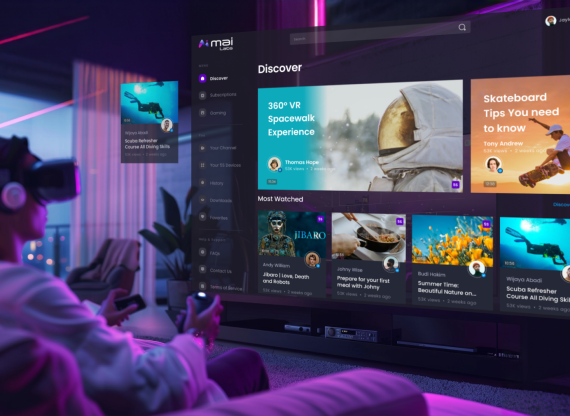In the rapidly evolving landscape of digital media, new and innovative monetization strategies are essential to keep pace with technological advancements. Enter the "Cost per Sense" system and method, a groundbreaking patent invented by Chamli Tennakoon. This revolutionary approach introduces a dynamic pricing model that quantifies and monetizes sensory interactions provided by content interaction systems. By assigning specific costs to sensory engagement—sight, sound, smell, taste, and touch—this model offers unique opportunities for content providers, advertisers, and users alike. Here's a closer look at how the "Cost per Sense" system works and its potential impact.

The Concept of "Cost per Sense"
Sensory Interaction Pricing
At the heart of the "Cost per Sense" system is the concept of assigning a defined cost to each sense engaged by users. This pricing can vary based on the level of interaction, creating different tiers or slabs. For instance:
- Basic Sensory Engagement: Simple interactions, such as viewing or listening, may have a lower cost.
- Advanced Sensory Engagement: More immersive interactions, like experiencing enhanced smells or detailed haptic feedback, may incur higher costs.
This tiered approach allows for flexibility in pricing, catering to different levels of user engagement and providing a scalable model for monetization.
User Data Collection
To accurately determine the extent of sensory engagement, the system collects and analyzes user data. By tracking how users interact with different senses, content providers can gain valuable insights into user preferences and behaviors. This data not only helps in optimizing content but also plays a crucial role in tailoring future offerings to better meet user demands.
Tailored Advertising and Campaigns
Advertisers and marketers can leverage the collected user data to design targeted advertising campaigns. By understanding users' sensory engagement patterns and preferences, advertisers can create personalized promotions that resonate more deeply with their target audience. For example, a food brand could tailor ads to users who frequently engage with taste and smell interactions, offering a more relevant and engaging experience.
Payment and Revenue Model
The "Cost per Sense" system introduces a flexible payment and revenue model that benefits both content providers and advertisers:
- Content Providers: Receive compensation based on user interactions with their content, encouraging the creation of more interactive and engaging experiences.
- Advertisers: Pay for the level of engagement their campaigns receive, ensuring that their advertising spend is directly correlated with user interaction and interest.
Potential Applications and Benefits
This model fosters creativity and innovation, driving the development of multi-sensory content that captivates and engages users.
Enhanced User Experience
The "Cost per Sense" system encourages content providers to explore and implement multi-sensory interactions, significantly enhancing the user experience. From immersive virtual reality environments to interactive cooking shows that engage taste and smell, the possibilities are endless.
Marketing and Advertising
Brands can create memorable and captivating experiences by leveraging multiple senses. Scent-enhanced advertisements can leave a lasting impression, making products more appealing and experiences more memorable.
Increased Engagement and Revenue
By offering a pricing model that directly correlates with user engagement, content providers can maximize their revenue potential. Users are likely to be more willing to pay for experiences that offer deeper sensory involvement, leading to increased engagement and profitability.
Effective Targeting and Personalization
Advertisers benefit from the ability to design highly targeted and personalized campaigns based on detailed sensory engagement data. This leads to more effective advertising strategies, higher conversion rates, and better ROI.
Innovation in Content Development
The flexible and dynamic pricing model fosters innovation in content development. Creators are incentivized to experiment with new ways of integrating sensory experiences into their content, pushing the boundaries of what's possible in digital media.
The "Cost per Sense" system and method patent by Chamli Tennakoon represents a significant advancement in the monetization of sensory interactions within content interaction systems. By assigning specific costs to different senses and implementing a dynamic pricing model, this innovative approach opens up new possibilities for content providers and advertisers. As multi-sensory content becomes more prevalent, the "Cost per Sense" system offers a forward-thinking solution for monetizing these rich, engaging experiences. Embrace this new era of sensory interaction and discover how the "Cost per Sense" model can transform the way we perceive, create, and monetize digital content.












